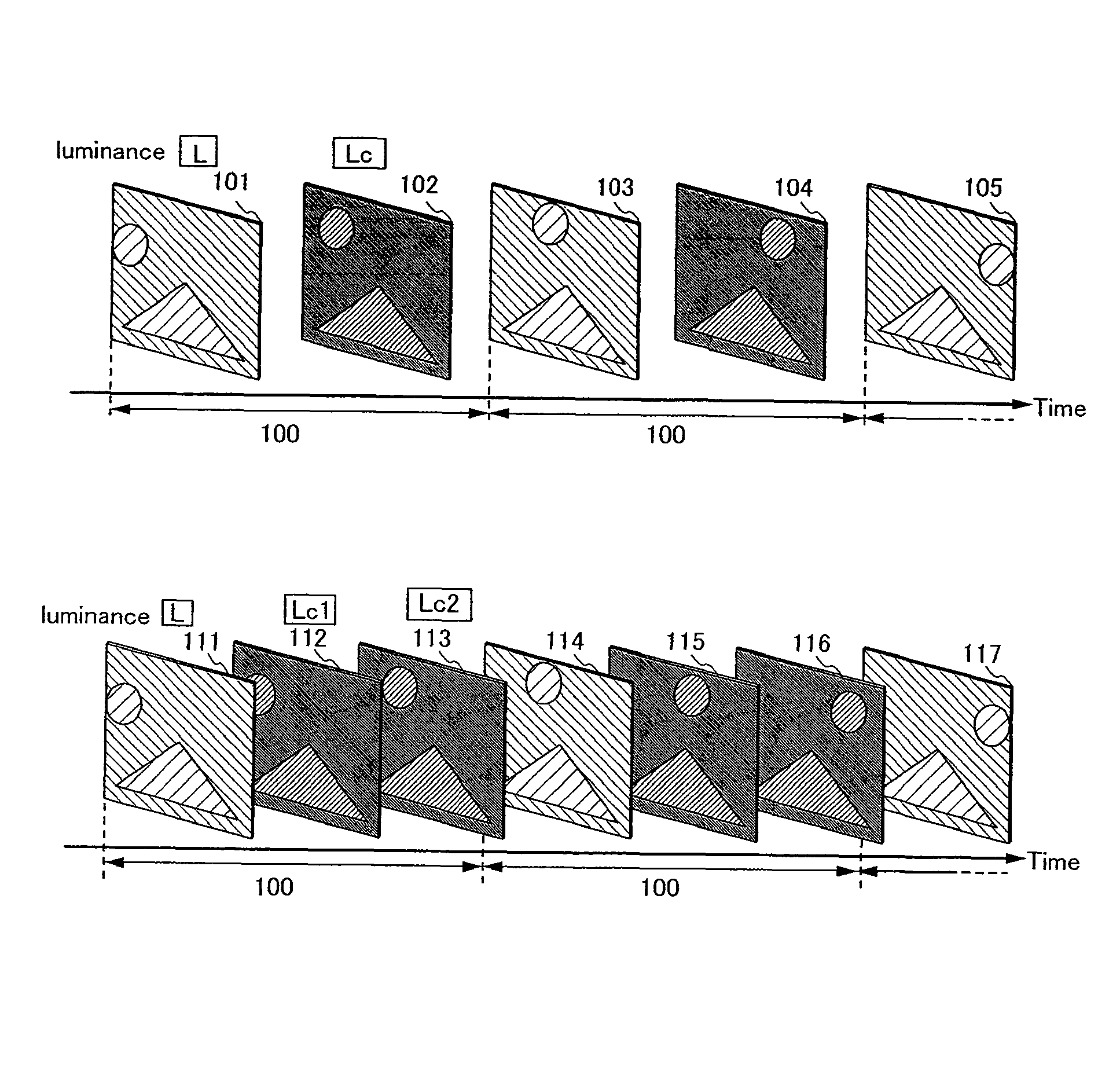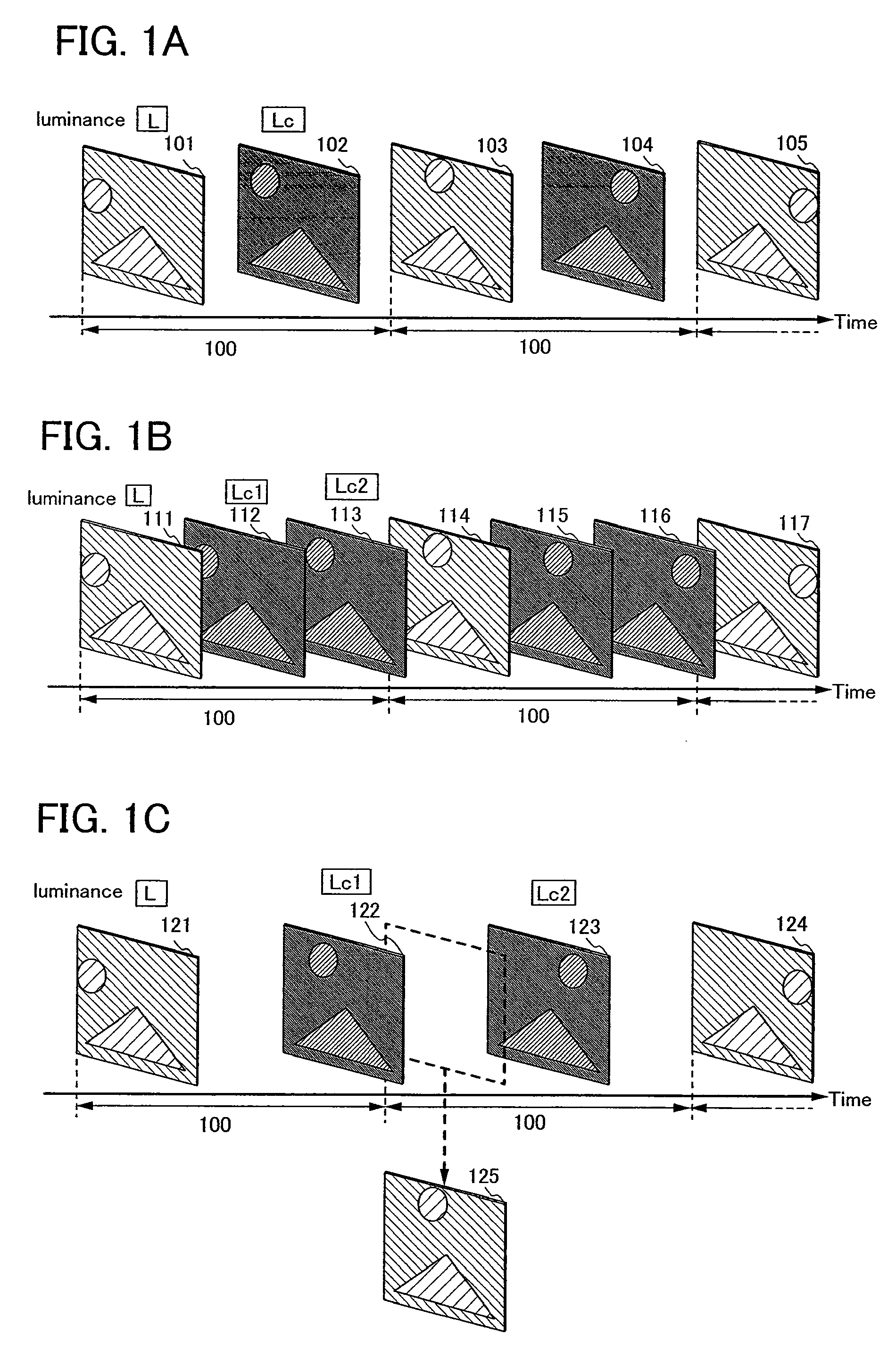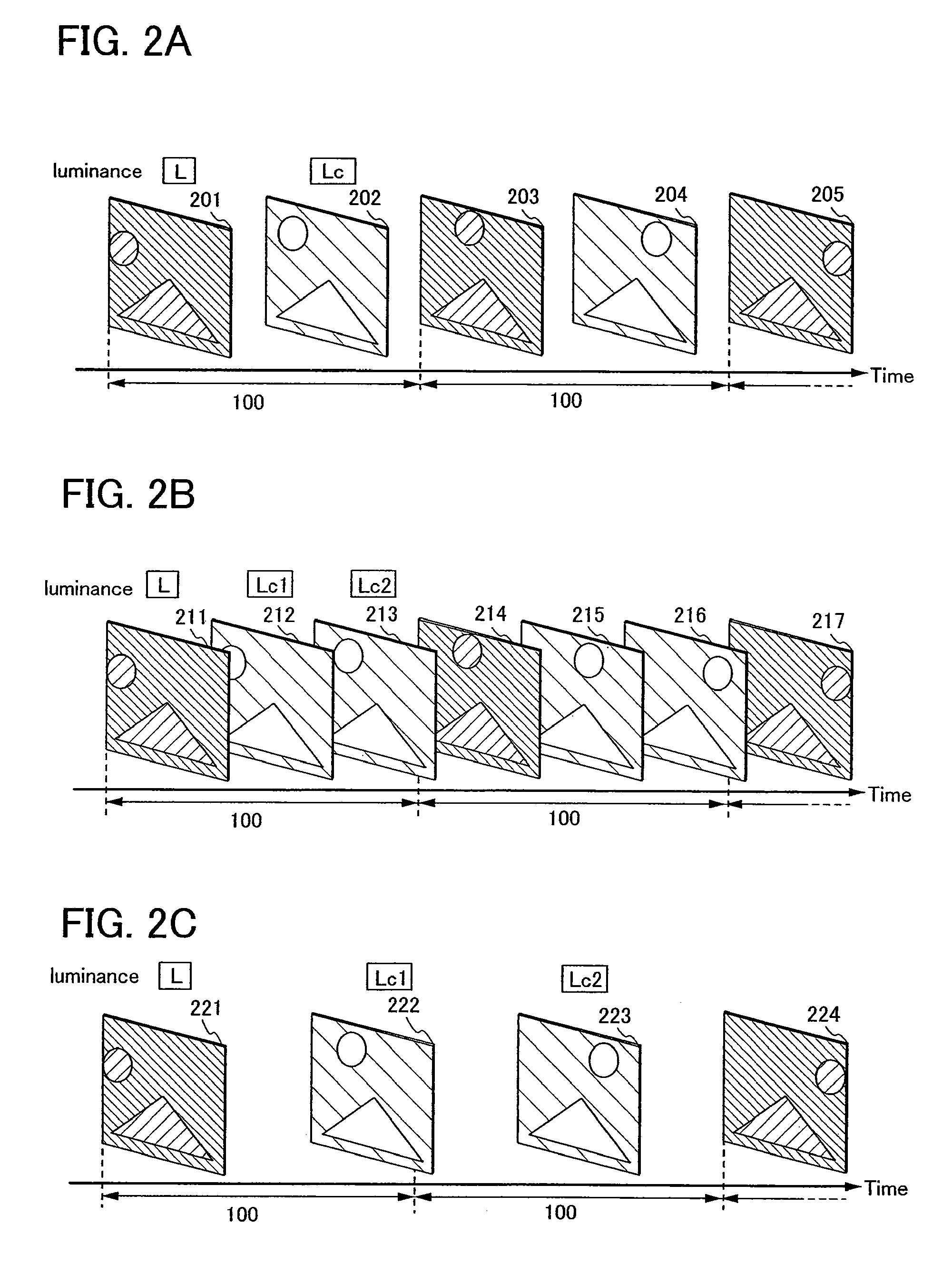Display device and method of driving the same
a display device and display technology, applied in semiconductor devices, instruments, computing, etc., can solve the problems of increasing power consumption to provide the same level of luminance, reducing the average luminance, and not giving sufficient effects, so as to achieve the same moving image characteristics, increase power consumption, and reduce the average luminance of images.
- Summary
- Abstract
- Description
- Claims
- Application Information
AI Technical Summary
Benefits of technology
Problems solved by technology
Method used
Image
Examples
embodiment modes
[0277]Embodiment Modes of the present invention will now be described. However, the present invention can be carried out in many different modes. Note that it is easily understood by those skilled in the art that the present invention is not limited to the following description and various changes may be made in modes and details without departing from the spirit and the scope of the present invention. Therefore, the present invention should not be limited to the descriptions of the embodiment modes below in this specification.
embodiment mode 1
[0278]Embodiment Mode 1 will describe a method of driving a display device or a semiconductor device of this specification to reduce motion blur, as an example.
[0279]In this embodiment mode, a case is mainly described, in which, when a frame rate of an image data to be input (which is the number of frames per second and also referred to as a input frame rate) and a frame rate of display (also referred to as a display frame rate) are compared, the display frame rate is higher than the input frame rate. Specifically, while the input frame rate is 60 Hz, the display frame rate may be 90 Hz, 120 Hz, or 180 Hz. In addition, while the input frame rate is 50 Hz, the display frame rate is 75 Hz, 100 Hz, or 150 Hz. However, without limitations, various values may be adopted for the input frame rates and display frame rates.
[0280]When the input frame rate is higher than the display frame rate, a part of the image data to be input is abandoned so that the display frame rate can be satisfied. H...
embodiment mode 2
[0331]Embodiment Mode 2 will now describe a method of detecting movement of images in frames and making an intermediate image, and a method of controlling a driving method based on the movement of the images in frames or the like, by a driving method of a display device and a semiconductor device in this specification.
[0332]With reference to FIGS. 4A and 4B, a method in which the movement of images in frames is detected and an intermediate image is made is described. FIG. 4A illustrates a mode in which a display frame rate is twice as high as an input frame rate. FIG. 4A schematically illustrate the method in which the movement of an image is detected with time as a horizontal axis. The period 100 denotes one frame period. A first image 401 is a basic image of the previous frame, a second image 402 is an interpolation image, and a third image 403 is a basic image of the current frame. In the images, a first region 404, a second region 405 and a third region 406 are provided as regio...
PUM
 Login to View More
Login to View More Abstract
Description
Claims
Application Information
 Login to View More
Login to View More - R&D
- Intellectual Property
- Life Sciences
- Materials
- Tech Scout
- Unparalleled Data Quality
- Higher Quality Content
- 60% Fewer Hallucinations
Browse by: Latest US Patents, China's latest patents, Technical Efficacy Thesaurus, Application Domain, Technology Topic, Popular Technical Reports.
© 2025 PatSnap. All rights reserved.Legal|Privacy policy|Modern Slavery Act Transparency Statement|Sitemap|About US| Contact US: help@patsnap.com



